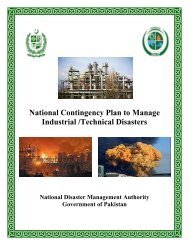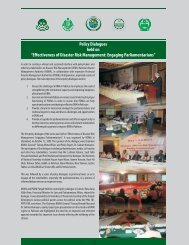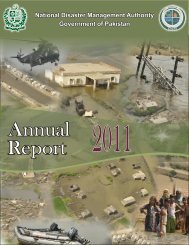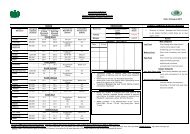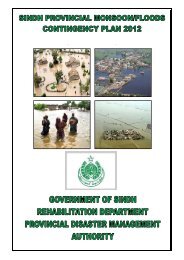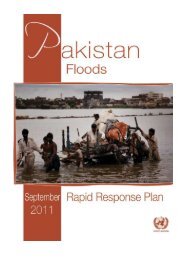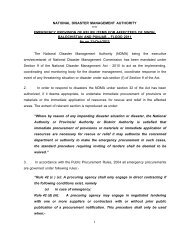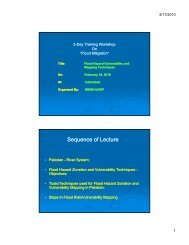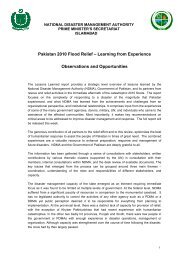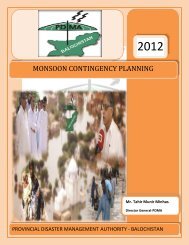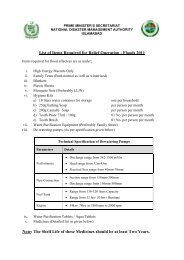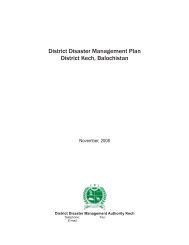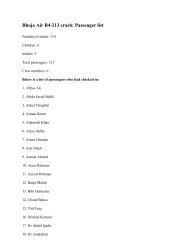National Disaster Response Plan (NDRP) March 2010 - NDMA
National Disaster Response Plan (NDRP) March 2010 - NDMA
National Disaster Response Plan (NDRP) March 2010 - NDMA
Create successful ePaper yourself
Turn your PDF publications into a flip-book with our unique Google optimized e-Paper software.
148<br />
(6) In prolonged drought, deliver fodder, de-worming medicines and vaccine for the<br />
animals. Exercise vigilance about disease outbreak in the animals and be<br />
prepared to deal with the problem.<br />
(7) Develop plan for livestock sector for early recovery phase if needed.<br />
(8) Prepare a detailed report and disseminate it widely .Document lessons learnt<br />
8. Irrigation Department<br />
from the response experiences and incorporate same in future planning.<br />
a. Emergency Preparedness<br />
(1) Finalize emergency preparedness plan.<br />
(2) Prepare hazard specific contingency plan and allocate resources for<br />
preparedness and emergency response activities.<br />
(3) Compile an inventory of heavy machinery and vehicles that can be used in<br />
disasters and a list of suppliers/transporters of clay/sandbags, bamboos,<br />
stones, and construction material. Update and share it with DDMA on six<br />
monthly basis.<br />
(4) Take steps to prevent cutting trees from both sides of canals and its<br />
distributaries.<br />
(5) Coordinate with forest department for canal and distributaries site plantation to<br />
promote soil conservation.<br />
(6) Install water flow gauge meters, repair modules and monitor water flow on<br />
regular basis. Share information with farmer organizations and DDMA.<br />
(7) Draw up detailed information of indigenous canal breach filler.<br />
(8) Develop joint monitoring system of water flow and embankment repairs with<br />
farmer organizations.<br />
b. Emergency <strong>Response</strong><br />
(1) Designate a representative to the DEOC.<br />
(2) Conduct damage assessment of irrigation channels, embankments etc and<br />
develop rehabilitation plans.<br />
(3) Monitor canal water flows. Inform DDMA and farmers through irrigation<br />
department‟s network and local media channels etc.<br />
(4) Assist in evacuation process of marooned people by providing boats.<br />
(5) Deploy irrigation staff teams on embankments in flood season.<br />
(6) Take measure to fill canal/distributaries breach.<br />
(7) Coordinate with farmers organization on management and maintenance of the<br />
water courses, distributaries and embankments.<br />
(8) Document lessons learnt from response experiences and share it with DDMA<br />
and provincial irrigation department.



